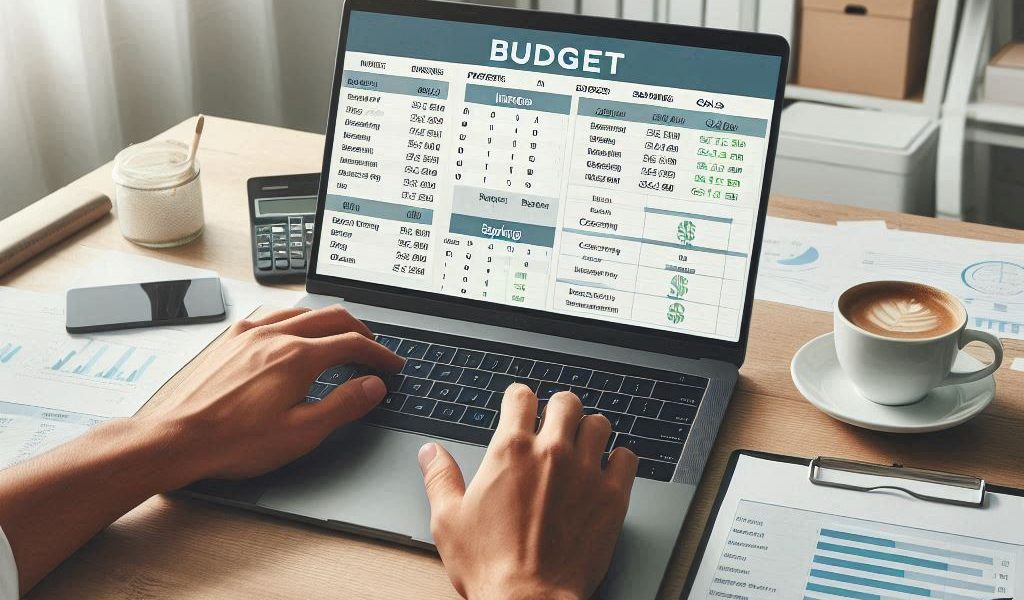When it comes to personal finance, one of the most essential skills you can develop is budgeting. Whether you’re just starting out in managing your finances or looking to get a better grasp on your money, budgeting provides the foundation for achieving your financial goals.
In this comprehensive guide, we’ll take you through everything you need to know about budgeting — from understanding the basics to setting up a budget, and how to stick to it. Whether you’re looking to save, reduce debt, or plan for future investments, budgeting is the key to success.
What is Budgeting?
Budgeting is the process of creating a plan to manage your income and expenses. It’s a way of tracking how much money you make, how much you spend, and where you can save. A budget helps ensure that you’re not overspending and that you’re meeting your financial goals, whether short-term or long-term.
At its core, budgeting is about giving every dollar a job. This can help you avoid impulsive spending, stay on top of bills, and allocate money to areas such as savings and investments.
Why is Budgeting Important?
Many people live paycheck to paycheck without fully understanding where their money goes. Budgeting brings awareness and control to your finances, and its importance cannot be overstated:
- Provides Financial Control: A budget helps you manage where your money is going, giving you greater control over your finances.
- Helps You Save: With a clear budget, it’s easier to set aside money for savings, emergency funds, and investments.
- Prevents Overspending: Budgeting helps you avoid the trap of spending more than you earn by providing clear limits.
- Reduces Financial Stress: Having a plan reduces the anxiety that comes with uncertain financial situations, knowing exactly what you can afford and when.
Steps to Create a Budget for Beginners
If you’re new to budgeting, don’t worry — the process is straightforward and doesn’t need to be overwhelming. Here are the basic steps to get you started:
Step 1: Assess Your Income
The first step to creating a budget is understanding your monthly income. This includes your salary, side gigs, business income, or any passive income streams like investments. Ensure to include your after-tax income to get an accurate picture of what’s available to you.
Step 2: Track Your Expenses
Next, track all your expenses. Divide them into two categories:
- Fixed Expenses: These are regular, predictable costs, like rent, utilities, car payments, and insurance.
- Variable Expenses: These can fluctuate, such as groceries, dining out, entertainment, and shopping.
For the best results, track every expense for a month to get a true picture of your spending habits.
Step 3: Set Financial Goals
It’s crucial to have clear financial goals in mind. Are you saving for an emergency fund? Paying off debt? Planning for a vacation? Setting goals will help you prioritize your spending and ensure that your budget reflects what’s most important to you.
Step 4: Choose a Budgeting Method
There are several methods for budgeting, and you can choose the one that works best for your financial situation. Here are the most popular budgeting methods:
- The 50/30/20 Rule: Allocate 50% of your income to needs (rent, utilities), 30% to wants (dining out, entertainment), and 20% to savings and debt repayment.
- Zero-Based Budgeting: As discussed earlier, this method involves assigning every dollar to a specific category until your income minus expenses equals zero.
- Envelope System: In this method, you use cash for various categories (like groceries or entertainment) and physically place it in envelopes. Once the cash is gone, no more spending occurs in that category.
- The Pay Yourself First Approach: Prioritize savings and investments first, then allocate the remaining income for living expenses.
Step 5: Monitor and Adjust Your Budget
Once your budget is in place, it’s time to monitor your spending and make adjustments as needed. Check your budget at least once a month to ensure you’re staying on track. If you find that you’re overspending in one category, adjust your budget for the next month to reflect your actual spending.
Common Budgeting Mistakes to Avoid
While budgeting is a powerful tool, beginners often make a few mistakes that can derail their plans. Here are some common pitfalls to avoid:
- Underestimating Expenses: Many people forget to include occasional or irregular expenses, like annual subscriptions, gifts, or car maintenance. Make sure to account for everything.
- Setting Unrealistic Goals: While it’s important to challenge yourself, setting too many savings or debt repayment goals can lead to frustration. Start small and gradually increase your goals as you get more comfortable.
- Not Tracking Spending Regularly: It’s easy to let spending get out of control if you don’t review your budget regularly. Consistent monitoring will keep you on track.
- Ignoring the Emergency Fund: Not having an emergency fund is one of the most common mistakes. Set aside a portion of your budget each month to build a cushion for unexpected expenses.
Tips for Sticking to Your Budget
- Use Budgeting Apps: Tools like Mint, YNAB (You Need a Budget), or EveryDollar make it easier to track expenses and stick to your budget.
- Set Up Automatic Transfers: Set up automatic transfers to savings or investment accounts, so you pay yourself first before spending.
- Find Accountability: Share your goals with a friend or family member who can help keep you accountable.
- Review Your Budget Monthly: Life changes, and so do your financial needs. Keep adjusting your budget to fit your evolving goals and circumstances.
Final Thoughts
Budgeting is one of the most powerful tools for managing your finances. With the right budget in place, you can take control of your money, reduce debt, increase savings, and invest in your future. Whether you’re saving for a big purchase or preparing for retirement, budgeting is the first step toward financial freedom.




